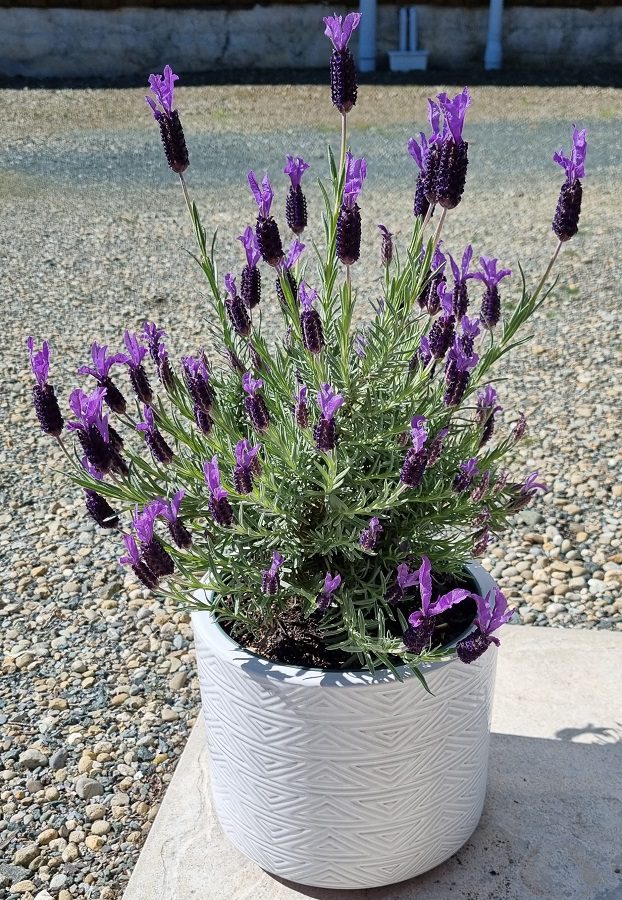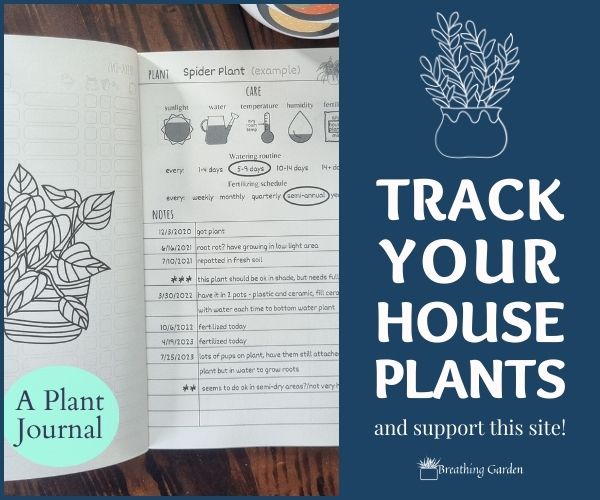Spanish lavender has a beautiful, unusual flower shape compared to other lavender varieties, which is what really makes this plant special. This makes it easily distinguishable compared to it’s relative, the English lavender!
*This post may include affiliate links. When you purchase items from these links, we will receive a small commission, at no extra cost to you, to help support this website. Thank you for your support! Read more ->
Related: Growing Lavender Indoors, French Lavender, Best Potting Soil for Lavender
What is Spanish Lavender?
Spanish lavender and French lavender are often confused as the same plant. Their flowers look almost the same, and they both have a lighter fragrance than the English lavender.
This lavender, in particular, is the species Lavandula stoechas. That’s what makes this the Spanish Lavender rather than French.

The flowers on this almost look like they have ears coming out of the top, which is how it can be somewhat identified (called sterile bracts). These will bloom throughout late spring and all of summer, and attract many bees to your garden, making them an ideal plant to have! Not only will it attract bees, but is also a favorite plant of many butterflies.
This lavender will grow to about 2 feet in height at most, and can grow in either a large container or in the ground, depending on your climate!
Scent
Where the English lavender is the typical scent for essential oils, and the French lavender is a soft scent that smells more like rosemary than lavender, the Spanish lavender has more of a woodsy scent.
Keep reading: what’s the difference between lavender and rosemary?
Climate
This plant can withstand a frost or two if it has to, but cannot withstand constant cold weathers, being at a minimum USDA hardiness zone of 8. If you live in a colder climate, plant your Spanish lavender in a container so it can be brought in over the winter!
This lavender variety does really well in hot and humid environments.
Soil Needs
Like other lavenders, this variety does well in poor soil. It does not need many nutrients to thrive. Make sure it’s in well draining soil, and just top up with about an inch of fresh soil in the spring.
Do NOT fertilize your lavender plant in the fall, only give it a tiny bit of fertilizer in the spring if you aren’t topping up the soil. But in general, lavender plants are happy in terrible soil without many nutrients.
Water Needs
While this plant does not need much water to thrive, it does like a humid climate. This means it’s suggested more for hot and humid areas of the world.
Water only occasionally during the summer, probably about once a week, and water much less during the winter as the plant will be mostly dormant.
Read here for lavender companion plants to grow with your lavender!
Sunlight Needs

This plant thrives in heat and full sun, making the Spanish Lavender the one to choose if you live in a very hot climate, as the heat will allow it to bloom spectacularly. It’s native to Greece/Spain regions, and really thrives in the warmer climates.
Plant this Lavandula stoechas in a full sun spot to give it the best chance for blooming possible and to keep it blooming for most of summer!
Pruning
Make sure to deadhead this lavender plant after the flowers have finished blooming. This will allow the lavender to potentially bloom again later in the season, and focus on fresh growth rather than pushing nutrients out to the dying flowers.
At the end of the season, prune this down by about 2/3 it’s height. You don’t have to prune your lavender plant, but it is helpful for a few reasons: There will be fewer leggy bits, and it will help the plant have more flowers the following season.
Try to avoid cutting on the wooden base stalk, as this will hinder fresh growth the next year.
The French and Spanish Lavender varieties are very similar, but Lavandula stoechas is the better choice to plant if you’re hoping to grow one in a pot, or in a very hot and humid climate!
Add beauty to your garden with these spectacular flowers on this lavender plant all summer long.



